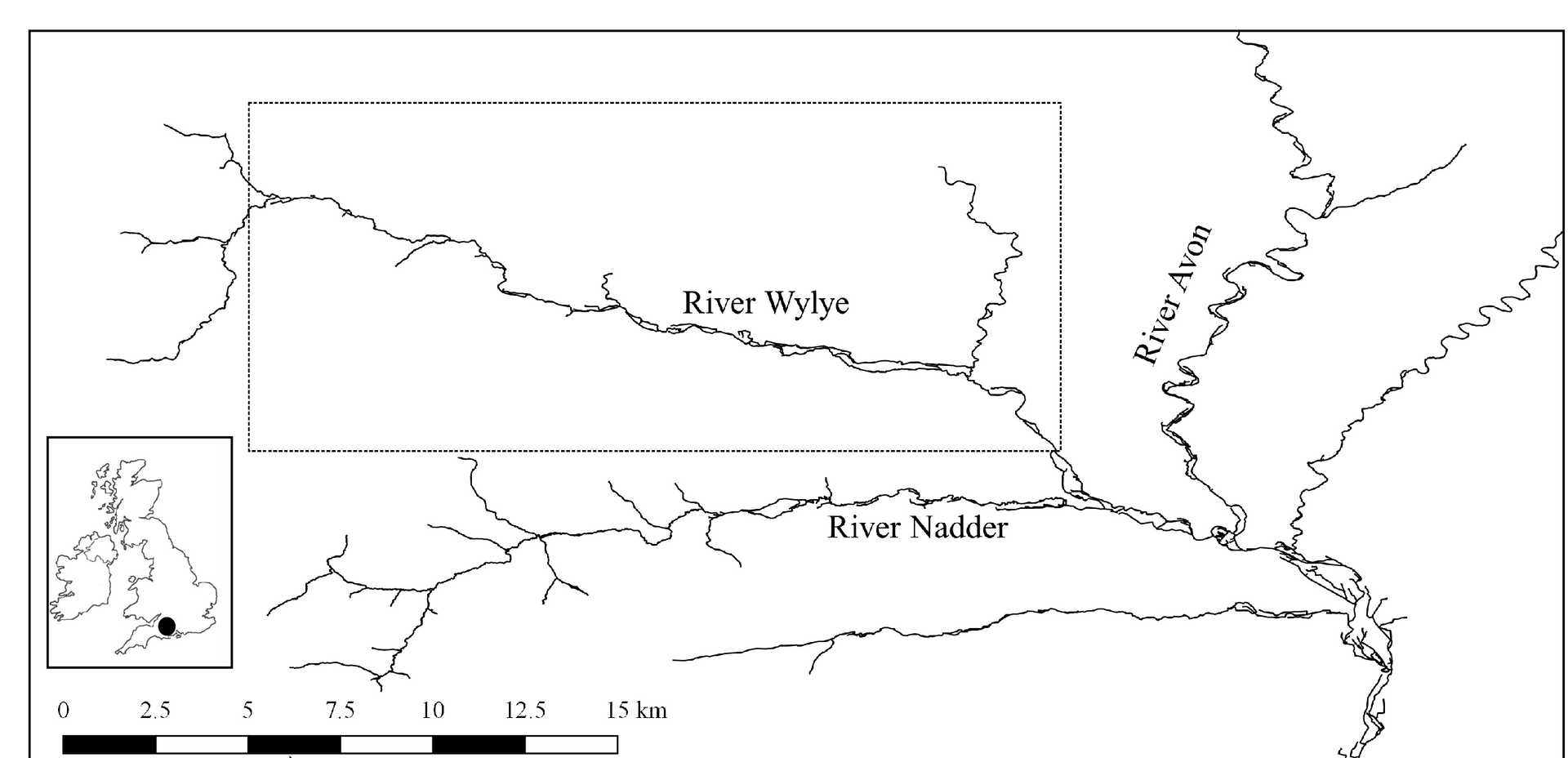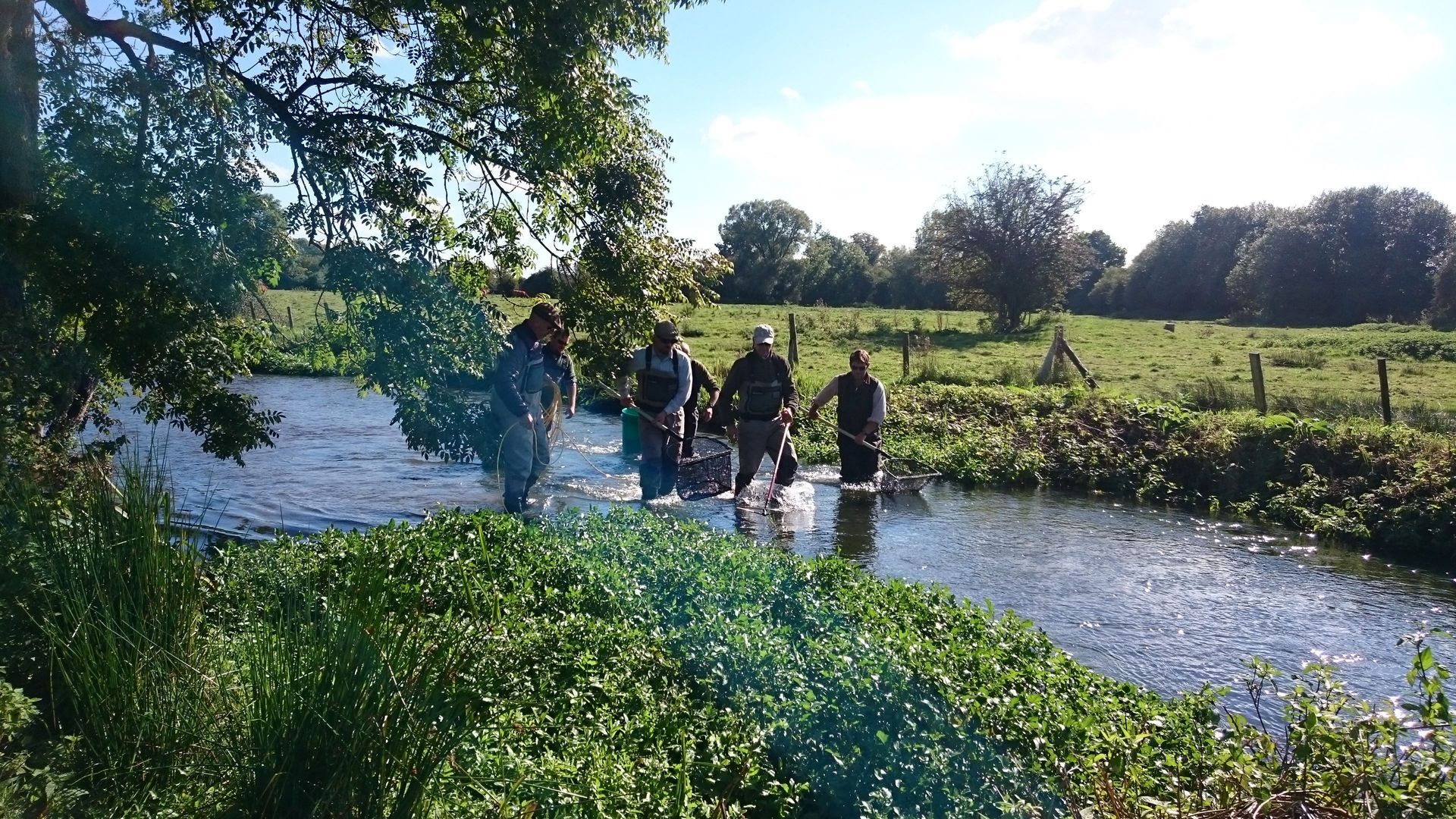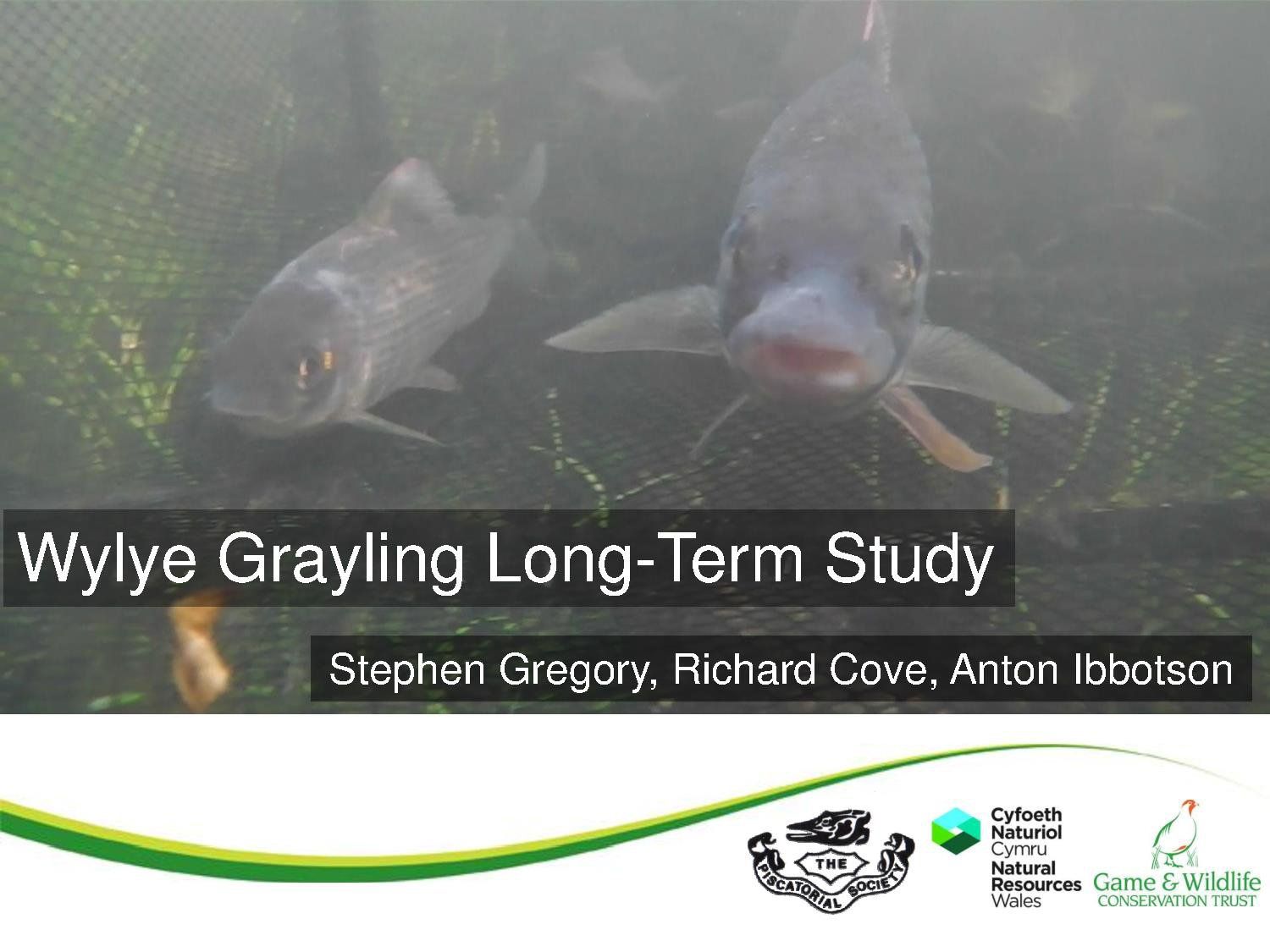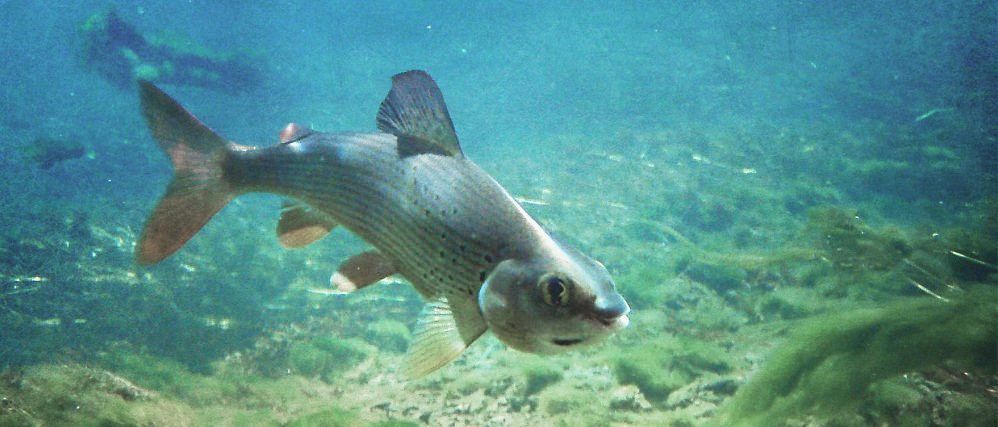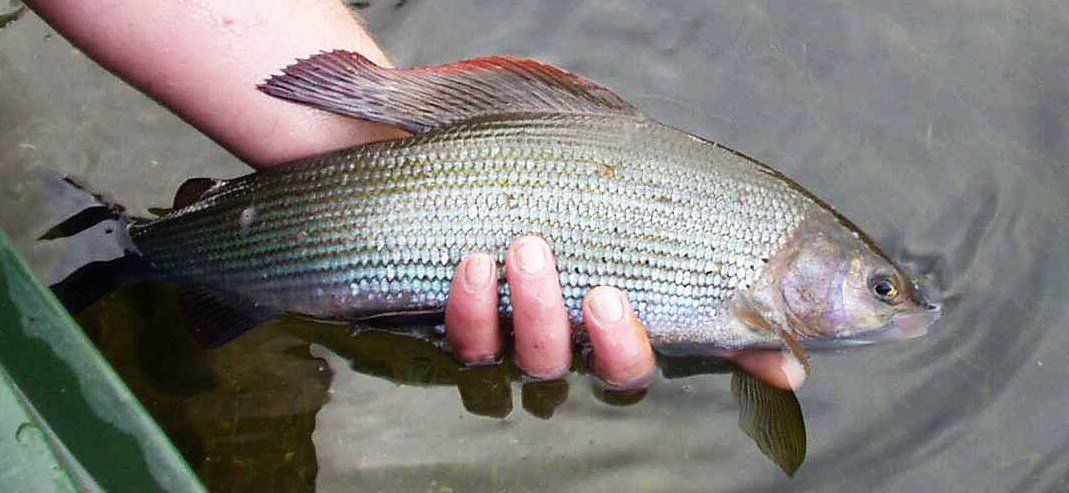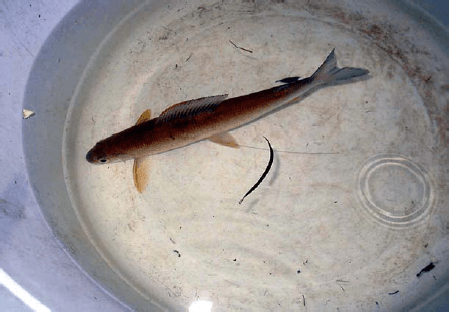The Wylye Grayling and Trout Survey (WGTS) has been monitoring grayling and brown trout populations since 1996 at multiple long-term sites on the River Wylye, Wiltshire. It is a collaborative project between Natural Resources Wales, the Piscatorial Society and the Game & Wildlife Conservation Trust, supported by the Grayling Research Trust and Wessex Water plc.
Location of the River Wylye in the Avon Catchment and wider UK (inset map)

